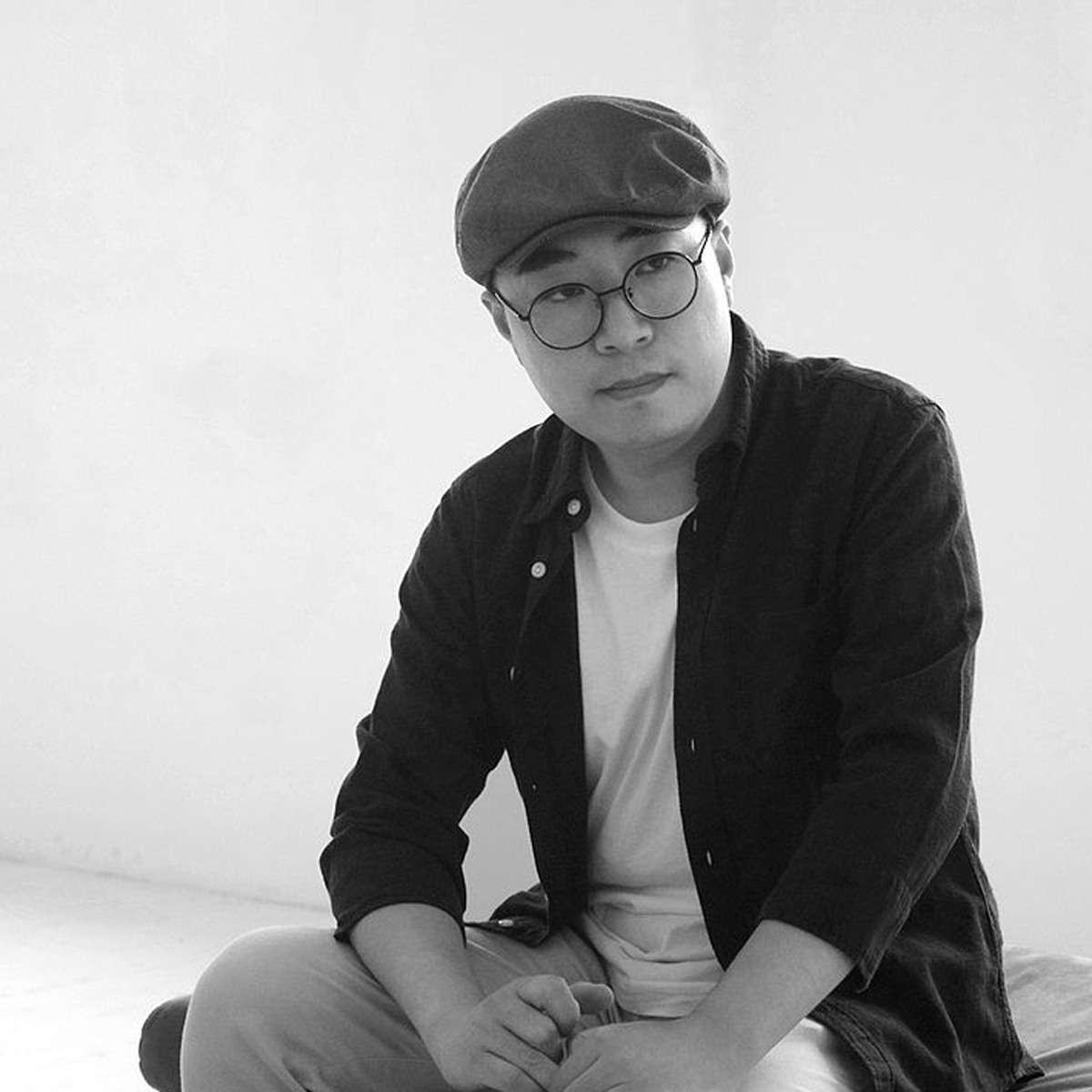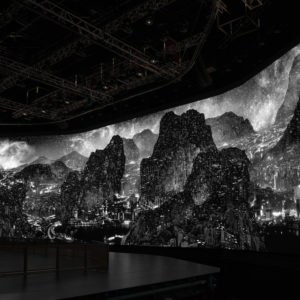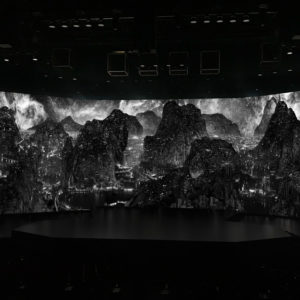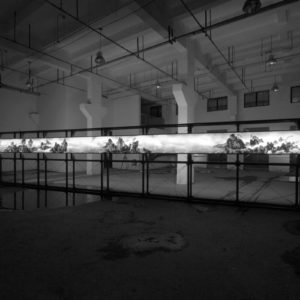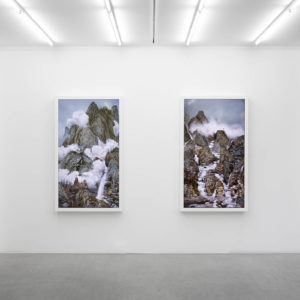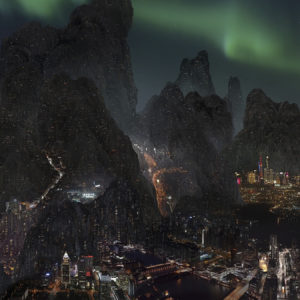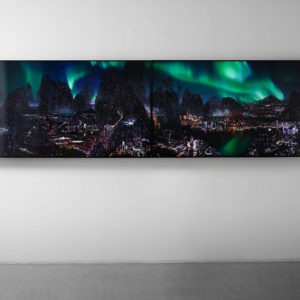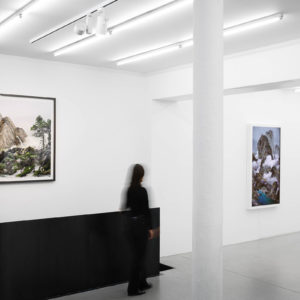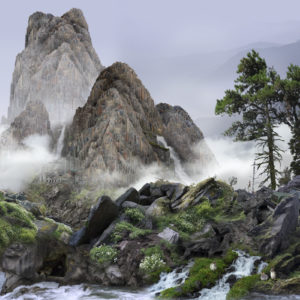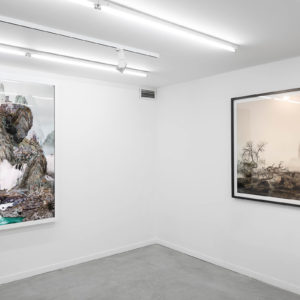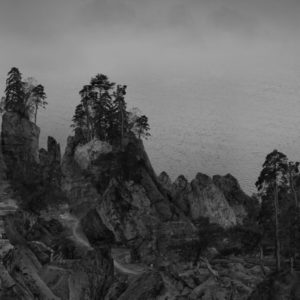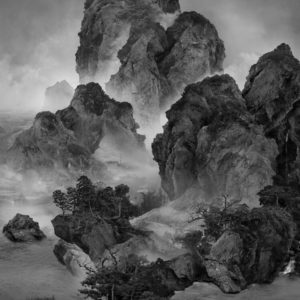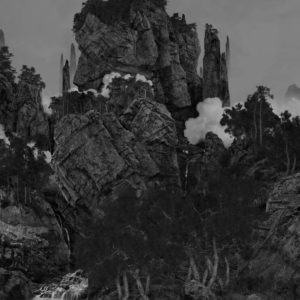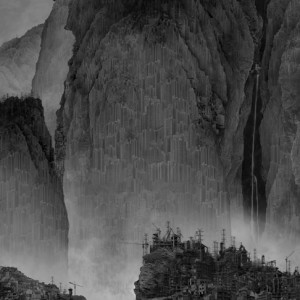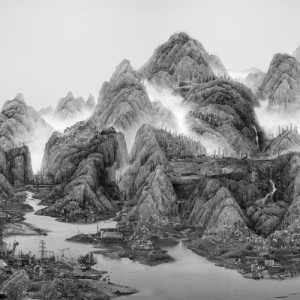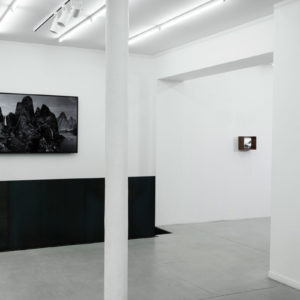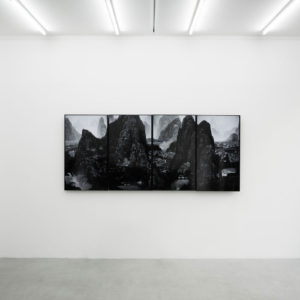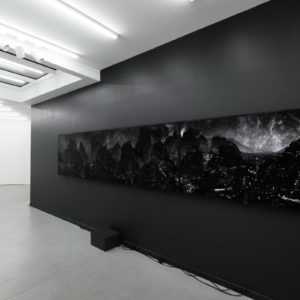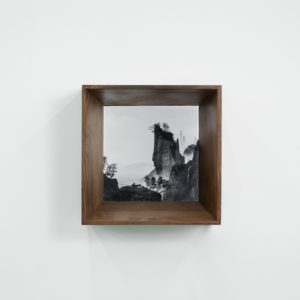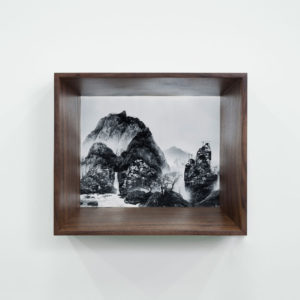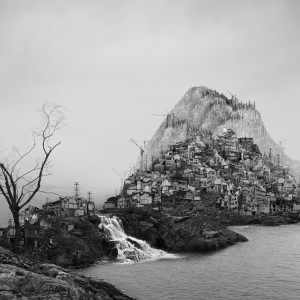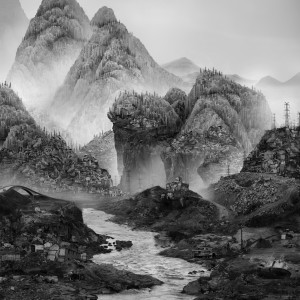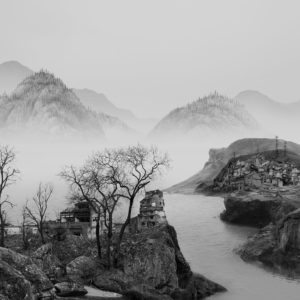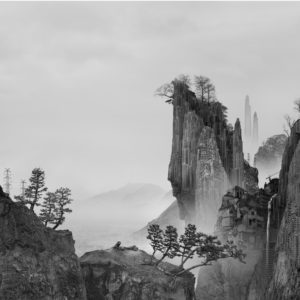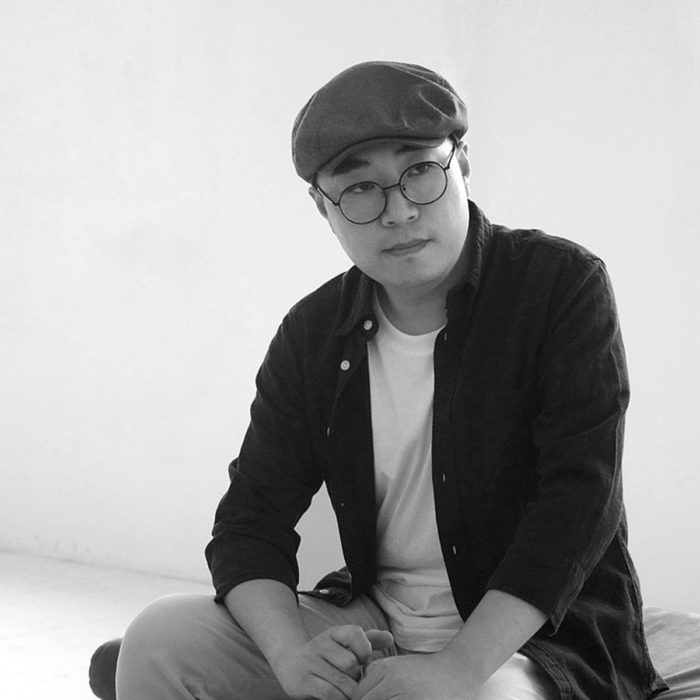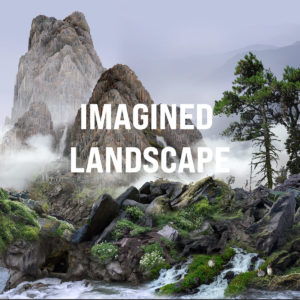Born in Shanghai in 1980.
Currently works and lives in Shanghai.
COLLECTIONS
Allen Memorial Art Museum, Oberlin College, Ohio, USA
Arendt Art Collection, Arendt & Medernach, Luxembourg
Art Gallery of New South Wales, Sydney, Australia
Bates College Museum of Art, Maine, USA
The British Museum, London, UK
Brooklyn Museum, New York, USA
Contemporary Art Center of Thessaloniki, Thessaloniki, Greece
Davis Museum at Wellesley College, Massachusetts, USA
Deutsche Bank, Hong Kong, China
DSL Collection, Paris, France
Fidelity Investment Corp. Collection, USA
Franks-Suss Collection, London, UK
How Art Museum, Shanghai, China
HSBC Hong Kong, Shanghai, China
Jordan Schnitzer Museum of Art, University of Oregon, Oregon, USA
M+ Sigg Collection, Hong Kong, China
Metropolitan Museum of Art, New York, USA
Middlebury College Museum of Art, Vermont, USA
Museum of Arts and Crafts, Hamburg, Germany
Museum of Modern Art, Paris, France
Museum of Mankind, Paris, France
Museum of Fine Arts, Boston, USA
Museum of Photographic Arts, San Diego, USA
The National Gallery of Victoria, Melbourne, Australia
Nevada Art Museum, Nevada, USA
The Rare Books Department of the National Library of France, Paris, France
Samuel P. Harn Museum of Art, Florida, USA
San Francisco Asian Art Museum, San Francisco, USA
The Utah Museum of Fine Arts, USA
Ulrich Museum of Art, Wichita State University, Kansas, USA
Centre for Chinese Contemporary Art – University of Salford, Manchester, UK
White Rabbit Contemporary Chinese Art Collection, Sydney, Australia
SOLO EXHIBITIONS
2023
Solo exhibition, PARIS-B, Paris, France
2022
Imagined Landscape, Whitestone Gallery, Taipei, Taiwan
2021
Journey to the Dark II, Fotografiska, Stockhom, Sweden
Imagined Landscape, Sullivan+Strumpf, Sydney, Australia
Imagined Landscape, Matthew Liu Fine Arts, Shanghai, China
2019
OCMAEXPAND: Eternal Landscape, Orange County Art Museum, Santa Ana, USA
Yang Yongliang: Eternal Landscape, HdM Gallery, London, UK
Artificial Wonderland, Dunedin Pulic Art Gallery, Dunedin, New Zealand
Views of Water, Whitestone Gallery, Hong Kong, China
2018
Salt 14: Yang Yongliang, Utah Museum of Fine Arts, Salt Lake City, USA
Journey to the Dark, Sullivan+Strumpf, Sydney, Australia
Journey to the Dark, Whitestone Gallery, Taipei, Taiwan
2017
Time Immemorial, Matthew Liu Fine Arts, Shanghai, China
Time Immemorial, Matthew Liu Fine Arts, Shanghai, China
2016
Time Immemorial, SHIBUNKAKU, Tokyo, Fukuoka and Kyoto, Japan
Fall into Oblivion, Pearl Lam Galleries, Singapore
2015
YAN, Shanghai Gallery of Art, Shanghai, China
FT5 Review with Yang Yongliang Film Screening, Fukuoka Asian Art Museum, Fukuoka, Japan
Solo Exhibition, Galerie PARIS-B, Brussels, Belgium
2014
Solo Exhibition, Art Basel Hong Kong, Galerie PARIS-B, Hong Kong
Solo Exhibition, Sophie Maree Gallery, Den Haag, The Netherland
2013
The Silent Valley, Galerie PARIS-B, Paris, France
Silent Valley, MC2 Gallery, Milan, Italy
Moonlit Metropolis, Schoeni Art Gallery, Hong Kong
2012
The Peach Blossom Colony, Galerie PARIS-B, Paris, France
The Peach Blossom Colony, LIMN Art Gallery, San Francisco, USA
The Moonlight, MD gallery, Shanghai, China
2011
Yang Yongliang: The Peach Colony , Galerie PARIS-B, Beijing
The Peach Blossom Colony – Yang Yongliang, 18 Gallery, Shanghai
Yang Yongliang: Phantom Metropolis, Schoeni Art Gallery, Hong Kong
Solo Exhibition, Window 70th: Yang Yongliang, Gallery Jinsun, Seoul
2010
Heavenly City, Galerie PARIS-B, Paris, France
Heavenly City, MC2 gallery, Milan, Italy
Yang Yongliang and Modern Metropolis Solo show, Nevada Art Museum, Reno, USA
Landscape – Yang Yongliang Solo Exhibition, My Humble House, Taipei
Artificial Wonderland, 18 Gallery, Shanghai
Yang Yongliang, MIFA, Melbourne, Australia
Seoul International Photography Festival, Seoul, Korea
2009
Yang Yongliang Photography Solo Exhibition, Limn Art Gallery, San Francisco, USA
On the Quiet Water, 45 Downstairs Gallery, Melbourne, Australia
2008
Heavenly City & On the Quiet Water, OFOTO gallery, Shanghai
2007
Phantom Landscape Series 2&3, OFOTO gallery, Shanghai
GROUP EXHIBITIONS
2022
Les Paysages de l’Âme, Musée Départemental des Arts Asiatiques, Nice, France
Summer Group Show, Sullivan+Strumpf, Sydney, Australia Between Shan Shui, Thames City 1974 Club, London UK
2021
The Earth as A Legacy, Musée des Con uences, Lyon, France Landscapes of the Soul, Asian Arts Museum, Nice, France Glow Shenzhen International Arts Festival, Shenzhen, China Thousand Mirages, The Mixc, Shenzhen, China
Digital Art Fair Asia, Asia Standard Tower, Hong Kong, China
What Happened Here?, Appetite, Singapore Grand Opening, Meta ZiWU, Shanghai, China
2020
Longing for Nature, Museum Rietberg, Zürich, Switzerland Scenery in Mock-up, Kuandu Museum of Fine Arts, Taipei, Taiwan
Allure of Matter: Material Art from China, Seattle Art Museum, Seattle, USA
Immaterial/Re-material, the Ullens Center for Contemporary Art, Beijing, China
Les flots écoulés ne reviennent pas à leur source, Abbaye de Jumièges, France
Group Show, HDM Gallery, London, UK
Out of the Shadows, Museum of Photographic Art, San Diego, USA
2019
MGM Presents: Hua Yuan Exhibition, MGM COTAI, Macao, China
Canne XR 2019, Festical de Cannes, Cannes, France
Art of the Mountain, China Institute, New York, USA Pal(ate)/ette/, Shanghai Gallery of Art, Shanghai, China Hua Yuan, MGM COTAI Theater, Macau, China
2018
Endangered Species: Artists on the Front Line of Biodiversity, Whatcom Museum, Bellingham, USA
City, Photo Brussels Festival 03 Edition, Hangar Art Center, Brussels, Begium
2050. A Brief History of the Future, The Royal Museum of Fine Arts of Belgium and National Taiwan Museum of Fine Arts, Taipei, Taiwan
Trompe-L’Oeil, Sullivan+Strumpf, Singapore
Inside Outside: A Century of East Asian Landscape 1900s-2000s, Samuel P. Harm Museum of Art, University of Florida, Gainesville, USA
Shanghai Beat –The Dynamism of Contemporary Art Scene in Shanghai, Contemporary Art Museum, Kumamoto, Japan
Altering Home – Culture City of East Asia, 21st Cery Museum of Contemporary Art, Kanazawa, Japan
Worlds Apart: Nature and Humanity Under Deconstruction, Allen Memorial Art Museum, Oberlin, USA
Photography Biennale 2018: Photography to End All Photography, Brandts – Museum for Artand Visual Culture, Odense, Denmark
Object, The British Museum, London, UK
Power and Beauty in China’s Last Dynasty, Minneapolis Institute of Art, Minnesota, USA
Rebuild Utopia, OCT Art & Design, Shenzhen, China
Beyond Brush and Ink: The Multiplicity of Eastern Aesthetic, China Art Museum, Shanghai, China
CHFILL Art Space, Stockholm, Sweden
Art of the Mountain: Through the Chinese Photographer’s Lens, China Institute Gallery, New York, USA
Inky Bytes: Traces of Ink in the Digital Era, Museum of Arts and Crafts – MKG Hamburg,
Germany
2017
Art is Science, Karuizawa New Art Museum, Nagano, Japan
40 Years of Chinese Contemporary Photography, Three Shadows Photography Art Center, Beijing, China
China in Motion, Annecy International Animation Film Festival, Annecy Museum, Annecy, France
Energy Filed, Museum of Contemporary Art, Shanghai, China
The Five Moons, Return of the Nameless and Unknown, PyeongChang Biennale, Pyeongchang, Korea
Prix Pictet: Disorder, Museum of Photographic Arts, San Diego, USA
Land and People, Cairns Regional Gallery, Queensland, Australia
Geo-Civilization: Land and Man in Contemporary Photography in China,
Geological museum and the City Gallery, Ramat Hasharon, Israel
2016
Jimei Arles Photography Festival, Xiamen, China
An Contemporary Art Experiment for Fu Lei, Zhoupu Art Museum, Shanghai, China
Après Babel, Traduire, Museum of Civilizations of Europe and the Mediterranean, Marseille, France
Beijing Independent Film Festival, Li Space, Beijing, China
Humanistic Nature and Society (Shan Shui) – An Insight to the Future, Himalayas Museum, Shanghai, China
Ink Remix: Contemporary art from China, Taiwan and Hong Kong, Museum of Brisban, Brisbane, Australia
Art-On Cascina, Festival di Arte Pubblica, Cascina, Italy
Shan Shui Within, Museum of Contemporary Art, Shanghai, China
China: Grain and Pixel – 150 Years of Chinese Photography, China Cultural
Center, Brussels, Belgium
Another Landscape, Yang Art Museum, Beijing, China
Prix Pictet: Disorder, Municipal Gallery of Athens, Athens, Greece; Somerest House, London, UK
Ink Remix: Contemporary art from China, Taiwan and Hong Kong, UNSW Galleries, Sydney, Australia
2015
Prix Pictet: Disorder, Musée d’Art Moderne da la Ville, Paris, France
Grain and Pixel, Shanghai Center of Photography, Shanghai, China
Copyleft: China Appropriation Art, Power Station of Art, Shanghai, China
Shanghai Ever, Museum of Contemporary Art, Shanghai, China
Bizzarreland – Exhibition of Chinese Contemporary Photography, Dadi Art Museum, Hefei, China; Kunstraum Villa Friede, Bonn, Germany
Humanistic Nature and Society – An Insight into the Future, 56th International Art
Exhibition of La Viennale di Venezia, Palazzo Flangini, Venice, Italy
China8 – Contemporary Art from China, für Kunst und Kultur e.V., Bonn, Germany
Aandacht! Aandacht! – Stormopkomst Festival, De Warande, Turnhout, Belguim
1st Overclock Festival, Espace Nova-Velaux, Velaux, France
State of Play, White Rabbit Gallery, Sydney, Australia
Ink Remix: Contemporary art from China, Taiwan and Hong Kong, Canberra Museum and Gallery, Canberra, Australia
Dislocation: Urban Experience in Contemporary East Asian Photography, Smith College Museum of Art, Northampton, USA
2050. A Brief History of the Future, Royal Museum of Fine Arts, Antwerp, Brussels; The Louvre, Paris, France
2014
Human Landscape, Dominik Mersch Gallery, Sydney, Australia
Art & Arcade, MU Strijp-S, Eindhoven, Netherlands
Outside the Lines – New Art From China, RH Contemporary Art, New York, USA
Tradition-Reversal, “Sarajevo Winter” the 30th International Festival of Sarajevo, Collegium Artisticum, Sarajevo, Greece
Aura of Poetry, Museum of Contemporary Art, Shanghai, China
1st Xinjiang International Art Biennale, Urumqi, China
Phantom City, Rotorua Museum, Rotorua, New Zealand
In the absence of Avant-garde reading, 798 Art Factory, Beijing, China
5th Fukuoka Asian Art Triennale, Fukuoka Asian Art Museum, Fukuoka, Japan
Origins, Memories and Parodies – 5th Daegu Photo Biennale, Culture&Arts Center, Daegu, South Korea
Contemporary Photography in China 2009-2014, Minsheng Art Museum, Shanghai, China
China’s Changing Landscape, Nordiska Akvarellmuseet, Skärhamn, Sweden
4th Singapore International Photography Festival, Singapore ArtScience Museum, Singapore
Babel, destiny of a myth, Bibliothèques de Pantin, France
Staging Encounters – Ten Years of Chinese Contemporary Photography 2005-2014, Lianzhou Foto, Lianzhou, China
Hohe Berge, fließendes, Chinesischen Kulturezentrum Berlin, Berlin, Germany
2013
DE LEUR TEMPS, ADIAF(Association for the International Diffusion of French Art), Art Center, The Banana Hangar Nantes, Nantes, France
Occupy Utopia, Holb�k, Denmark
How Far Away is the Horizon? Copenhagen, Denmark
5 Moscow Biennale of Contemporary Art, Space-time / Main Project, Moscow, Russia
123b4, Exhibition with works-donations from the Thessaloniki Biennale of Contemporary Art, Contemporary Art Center of Thessaloniki-SMCA (Warehouse B1,port), Thessaloniki, Greece
New Ink An exhibition of ink art by post 1970 artists from the Yiqingzhai collection, Sotheby’s Hong Kong Gallery, Hong Kong
European Media Art Festival 2013 – Artbox, Stadtbibliothek Osnabrueck, Germany
Et la Chine s’est éveillée…, Chapelle de la Visitation, the contemporary art space of Thonon-les-bains, France
Stad in Beeld, Beeld van een Stad, Stedelijk Museum Zwolle, Zwolle, The Netherlands
Venti d’oriente, Al blu d prussia Gallery, Naples, Italy
2013 Changwon Asian Art Festival, Sungsan Art Hall, Changwon, Korea
Dreamers, AlexandFelix | Alessandro Lupi | Yang Yongliang, Palazzo Tagliaferro contemporary culture center, Milan, Italy
Landmark: The Fields of Photography, Somerset House, London, UK
Babel, Botanique, Brussels, Belgium
2012
The Printed Image in China, 8th-21th Century, The Metropolitan Museum of Art, New York, USA
A Sprinkle of Salt – Exhibition of Shi Zhiying / Yang Yongliang, MOT ARTS, Taiwan
Babel, Palais de Beaux-Arts, Lille, France
The creators project, Ullens Center for Contemporary Art, Beijing, China
Time Catcher, National Gallery of Victoria, Melbourne, Australia
Conceptual Renewal – Short History of Chinese Contemporary Photographical Art, Si Shang Art Museum, Beijing, China
2011
4th Fotofetival Mannheim Ludwigshafen Heidelbery, Mannheim, Germany
Silent Picture: Dai Mouyu Sun Yu and Yang Yongliang, FQ Projects, Shanghai
The End of the Brush and Ink Era: Chinese Landscape, True Color Museum, Suzhou, China
Art Mia Living group show, Art Mia Gallery, Beijing
Open: exhibition of new generation, My Humble House, Taipei
“ollectif Generation, The Librairie Auguste Blaizot, Paris
Biennale of Photo in Alessandria, Alessandria, Italy
Post Traditions: Enlarge the Carve, Shanghai Duolun Musuem of Modern Art, Shanghai
2010
3×3, Crossing Art Gallery, New York, USA
2010 Chinese Contemporary Art Exhibition, ddm warehouse, Shanghai
Digital Generation, Galerie Paris-Beijing, Beijing
Multiple Visions a group show with Chu chu, Liu Ren, Liu Ke, Yang Yongliang, Epsite Beijing
Will to Height – Contempotary art exihibition, Epsite Shanghai
Urban Utopia, Charly Bailly Contemporary, Geneva, Switzerland
China Soul: Maleonn, Yang Yongliang and Zhang Dali, Magda-Danysz Gallery, Paris
2009
Scene-A dialogue with space & time, River South Art Center, Shanghai
Under construction-Photography on the EXPO 2010 Shanghai, Pudong Library, Shanghai
China Avant Garde – Landscape in Transit Han Bing, Yang Yongliang & Zhang Wei, Limn Art Gallery, San Francisco, USA
City of Phantom Visions, OFOTO Gallery, Shanghai
Drama/Stage, Urban Photography in Shanghai, Liu Haisu Art Museum, Shanghai
Photo Beijing, The Agricultural Exhibition Centre of China, Beijing
2nd Thessaloniki Biennale, Thessaloniki, Greece
40th Anniversary of the Rencontres d’Arles, Discovery Award, Arles, France
H&R Block ArtspaceProject Wall, Kansas City Art Institute, Kansas, USA
New Chinese architecture, Institute Cervantes, Beijing
2008
Two Points: 2008 Chinese Contemporary Art, Palazzo Frisacco, Tolmezzo, Italy
Stairway to Heaven, Bates College Museum of Art, Maine USA
FOTO OFOTO, OFOTO Gallery, Beijing
Artificial Nature, MOCA ARTLAB, Shanghai
Collision Part I – New Classic: Yang Yongliang & Gao Feng, FQ Projects, Shanghai
Material Link – A Dialogue Between Greek and Chinese Artists, MOCA, Shanghai, Athens
Collision Part II – TU LONG JI: Installation by Yang Yongliang, FQ Projects, Shanghai
Shanghai-urban public-Space, Hamburg, Germany
Contemporary Chinese Art, Limn Gallery, AQUA Art Miami, Miami
Mixed Maze, Red Mansion Foundation, London
2007
Art Now 2007, Gyeonggido Museum of Modern art, Ansan, Korea
2007 Pingyao International Photography Festival, Pingyao
Celebrating, Epson Imaging Gallery, Shanghai, Beijing
AWARDS
2020
Asia Society – Asia Arts Game Changer Awards NORTH AMERICA – Awarded
2019
Asia Society, Asia Arts Game Changer Awards – Awarded
Prix Pictet – The Global Award in Photography and Sustainability – Nominated
2009
40th Anniversary of the Rencontres d’Arles, Discovery Prize – Nominated
PUBLICATIONS
2017
Yang Yongliang: Time Immemorial, Matthew Liu Fine Arts
2013
Yang Yongliang: Artificial Wonderland, Galerie Paris-Beijing
2012
Yang Yongliang: New Landscapes (Chinese Contemporary Photography), David Rosenberg
Yang Yongliang: Paysages, David Rosenberg
-
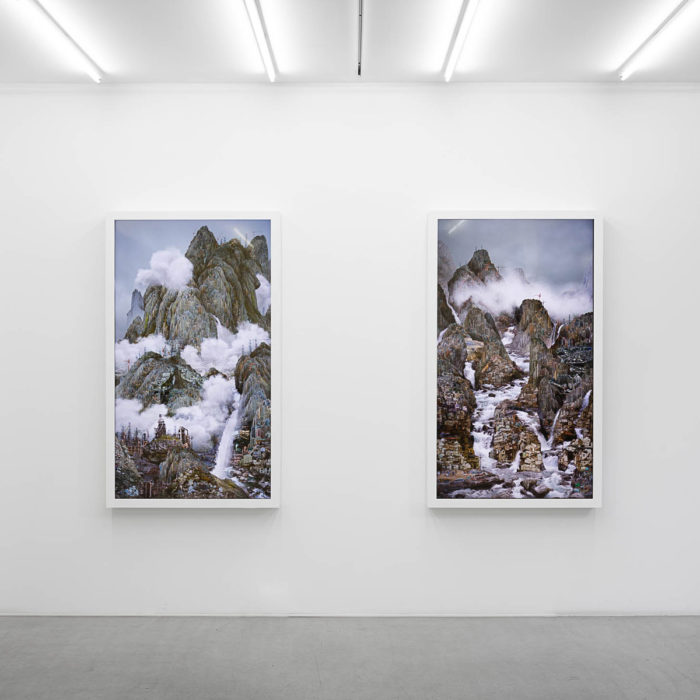
Yang Yongliang
Imagined Landscape
03/11/2023 - 04/22/2023 -
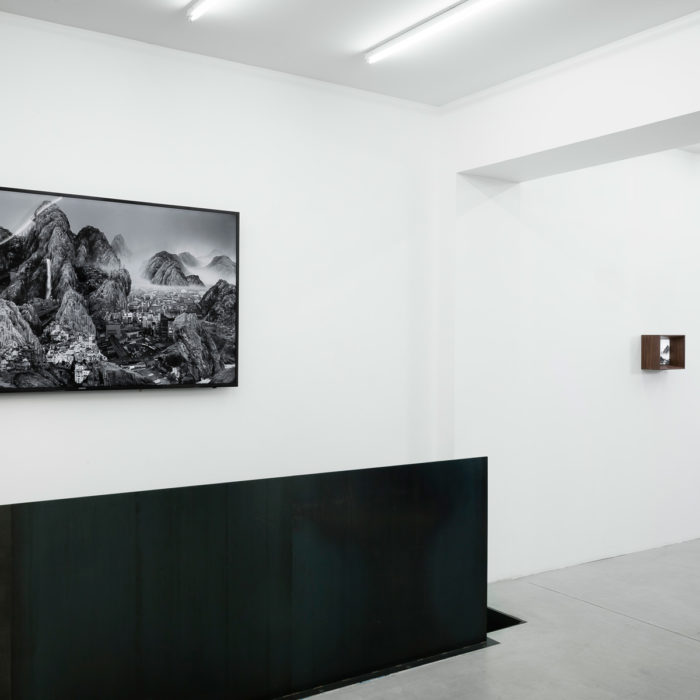
Yang Yongliang
TIME IMMEMORIAL
11/04/2017 - 01/13/2018 -
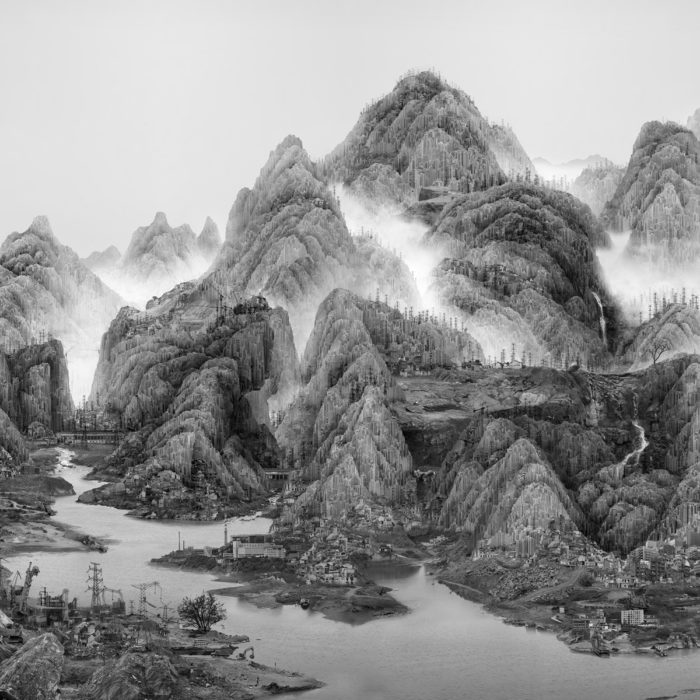
YANG YONGLIANG
FROM THE NEW WORLD
01/15/2015 - 03/07/2015 -
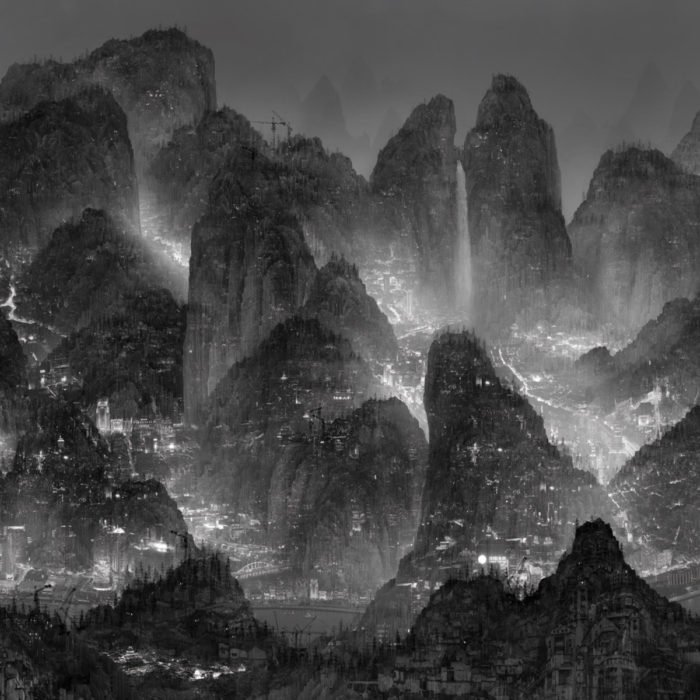
YANG YONGLIANG
THE SILENT VALLEY
03/14/2013 - 05/11/2013
MEET YANG YONGLIANG
Yang Yongliang - Endless Streams, 2017
Yang Yongliang - The return, 2019
Yang Yongliang - The waves, 2019

ET AUSSIE DANS LES FOIRES OFF : À ASIA NOW – STÉPHANIE DULOUT 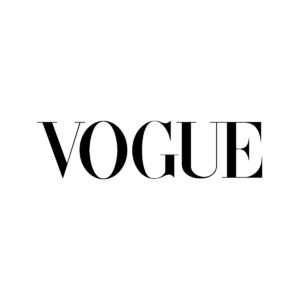
What To See At The Digital Art Fair 2023 – Alyanna Raissa J. Payas 
“Beyond the Mountain” is where we all want to go – Kai Curry 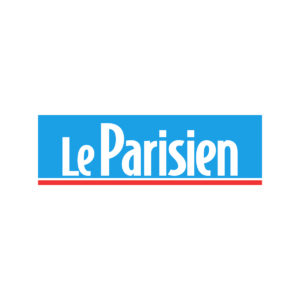
Exposition : l’après-Tian’anmen des artistes chinois au château de Saint- Pierre-de-Varengeville 
Engaging with the unfamiliar – Paige Peacock 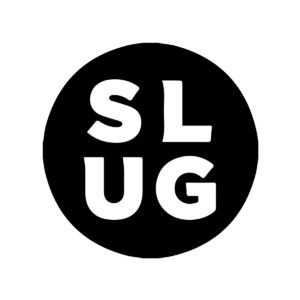
Cities and the sky: Yang Yongliang’s Salt 14 – Parker Scott Mortensen 
Drawing attention to societal issues – Rebecca Fox 
Studio visit: Digital artist Yang Yongliang – Alessandro De Toni 
Yang Yongliang makes mountains from towers and construction sites – Amanda Sealy 
If You Look Closely, These Mountains Are Actually a Bustling Metropolis – Laura Mallonee 
Yang Yongliang’s best photograph: misty Chinese mountains succumb to the city (Interview) – Ben Beaumont-Thomas 
Artificial Wonderland (Interview) – Alexander Strecker 
Artist Yang Yongliang’s naturalist-looking work has “hidden” message about Chinese development 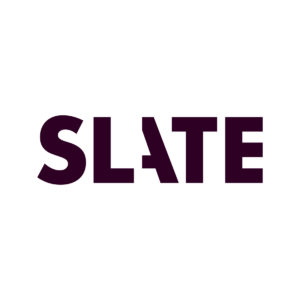
Ancient Chinese Art for the 21st Century – Jordan G. Teicher
The Mirror of Time
By David Rosenberg, May 2011
Yang Yongliang walks through his city – Shanghai – and photographs the buildings that he will then use to compose his “Phantom landscapes”, his “Heavenly Cities” and “Artificial Wonderlands”; these series of digital “pictorial” works whose visionary power and plastic coherence have quickly earned him unanimous international recognition.
He is above all a walker, a surveyor. In this he joins the line of the pioneers of modernity, such as the photographer Eugene Atget (1857-1927), a large part of whose work consisted in keeping a kind of inventory or visual archive of the architectural forms that surrounded him, both those that were about to disappear and those that were just appearing. He was not an observer of a serene and impassible landscape, but rather of continuous upheaval. Thus his photographic images could not be conceived, according to him, without this double determination: the mobility of the artist, and the city as the field of a visual, philosophical and artistic investigation. These two characteristics are also found in the works of Yang Yongliang.
Strolling, wandering, collecting: his attentiveness and the shifting outlines of his gaze also call to mind Walter Benjamin’s “Passages”, where he writes thus about Paris: “Even to the flaneur, the city – be it that where he was born (…) – is no longer native soil. It represents to him the stage for a performance.” This line, this lineage also reaches back to the surrealists, to Aragon, whose visual as well as poetic work “The Peasant of Paris” traces back the genesis of the complex feelings that the transformation of the Parisian landscape inspire in him.
For these idlers, these gleaners of perceptions, thoughts and fragmentary affects, the “now” of the image contains the “once upon a time”. The traces and remanences are at the heart of their concerns and, if they compose their works using the visible, it is as much in order to decrypt that which it unveils as that which is left concealed within it. Seeing is a way of thinking, and thinking is another way of seeing. It isn’t just about simply recording, but as the American photographer Paul Strand (1890-1976) explained, it’s about working with a “machine” for inventing new ways of seeing.
Their gaze is a prism whose facets diffract not only light, but also time and history. Through this dialectic seizure of present and past, what emerges is a vision of the future or of possible futures. “Each era dreams of the next”, wrote the historian, Jules Michelet.
In the works of Yang Yongliang, the stroll is not limited to a physical walk amid the urban landscape. It is also a mental walk through images of the history of art. It is from this double advance – through an upset and evanescent physical space as well as a stable, impassible mental observation – that this present body of work is derived.
“The city,” he explains, “is the place where I live, a space that evolves with me and which contains my memories. A mirage or ghost-city is the environment towards which I reach out, but it only exists in my imagination. The water of the mountain (the landscape) suggests the imitation of the traditional art forms of my childhood, which have gradually disappeared as the city and I have evolved. The birth of the Ghost Landscape is not an accident. The City, the Landscape – I love them and hate them at the same time. If I love the city for its familiarity, I hate it even more for the staggering speed at which it grows and engulfs the environment. If I like traditional Chinese art for its depth and inclusiveness, I hate its retrogressive attitude. The ancients expressed their sentiments and appreciation of nature through landscape painting. As for me, I use my own landscape to criticize reality as I perceive it.”
The megalopolis and its new technologies are seen as a biotope of images and art; the contradictions, tensions and mutations of the real are the motor of creation; the remanence of traditional culture and the emergence of new ways of thinking that polarize contemporary artistic conscience: this, in brief, is what characterizes Yang Yongliang’s work.
But getting back to the profound connection between the artist and the city of Shanghai, it should be stressed that it is not so much this particular city, with its characteristics, its “soul”, its history and aesthetics, that interests him. The issue that is at the heart of Yang Yongliang’s work is the essence of “building” – the grey seriality, the repetition of the same, the proliferative and uncontrolled phenomenon of excessive urbanization, and the antagonistic relationship to nature which underlies it. In a sense, he is like those scholars whose pictorial work was based more on a conception and a feeling of nature than on direct perception and observation.
Another paradox is that the artist uses the photographic medium and the resources of modern technology to produce these “paintings”, whose texture and whose rules of composition are borrowed directly from Shan Shui, the traditional landscape art of China, an art in which the image’s moral and contemplative component is ultimately more important than its aesthetic quality.
On the one hand the artist uses this open reflection on the world, while on the other there is a critical reexamination of his medium of choice as well as the pictorial heritage in which he was trained, making Yang Yongliang a contemporary artist in the full meaning of the term.
The critical potential contained in his works may not, however, be reduced to ecological clichés or to the righteous feelings of a guilty conscience deploring the loss of the link between man and nature. There is in them a true visionary breath, a spectacular sense of composition that allows the artist to play with a wealth of almost imperceptible details without ever losing sight of the whole of the landscape of which they are a part.
Faced with the accumulation of skyscrapers and oversized buildings, faced with these pharaonic construction sites, these mountain-cities or mountains of cities, one thinks of the German Expressionists and Dadaists, such as John Heartfield or the brilliant Belgian engraver, Frans Masereel – who, it so happens, also spent time in China – both major critics of the dehumanized modern megalopolis. One also thinks of Altdorfer’s battle scenes, of Brueghel’s Tower of Babel, and of Bosch’s apocalypses. Nevertheless there is a notable distinction: In Yang Yongliang’s works there is no trace of the individual, not a single human figure in sight.
What does this mean? Is there no actor, no author? Does the city reproduce itself by itself indefinitely? Does it proliferate along the lines of uncontrollable metastases? Or should we seek the answer in the seals and inscriptions in red ink that adorn these rolls of paper? Seen from afar, these signs inevitably recall the texts and marks of collections that adorned ancient paintings. But here we find an accumulation of bar codes and the logos of multinational corporations. It is these abstract entities that sign the landscape we have before our eyes, they are the co-authors of these latent images that the artist makes visible and records.
Construction and destruction, inevitable cycles: it is a total show that is both strange and familiar. We are torn between the limbo of dreams and naked reality. The essence of the megalopolis is revealed here: it is a colossus with feet of clay. Here a giant wave sweeps away everything in its path, there buildings stand half-submerged, elsewhere disturbing steam clouds completely cover the surroundings, buildings teeter on their foundations, or else dramatic and devastating explosions shatter a once familiar and livable world into pieces.
Only from a certain distance is it possible to account for these invisible and antagonistic energies whose tumultuous interlacing sometimes draws majestic and unique shapes, and sometimes draws accumulations of discordant structures. It is these energies that open up space or lead to its saturation; these energies which generate fluid and ample trafficpatterns or lead to fatal gridlocks. Hence the “distant” and withdrawn point of view from which the artist builds, directs and composes his “paintings”.
Premonitory works? Yang Yongliang’s landscapes linger patiently: they are simply waiting for the world to end up resembling them. There is a profound truth in them which gives them a head start on their model. The mimetic relation between the real and the image – between the model and its double – is reversed. It is like Picasso explained to Gertrude Stein, whom he had just painted, that if the painting did not look like her, she would end up looking like the painting.
The images emerge. They appear like a ghost ship on the shimmering surface of the deep waters of the unconscious. The conditions conducive to the breakup of the spirit and to the fragmentation of sensitivity must be fulfilled so that both the gaze and the world can be transformed and can complete their reconstruction.
Whether it is patiently meditated and planned in its structure as well as its execution, or whether it is the unpredictable consequence of an instinctual and uncontrolled energy, the picture – the oracle – only takes place and achieves its full significance in relation to reality, going beyond mere likeness or verisimilitude. It is at this price that it acquires its illuminating power of anticipation. The picture – the big picture – is the mirror of time. In it are reflected the startling landscapes of Yang Yongliang, which are like the memory of the future.
Yang Yongliang’s Visionary Landscapes
By Jan Stuart
Yang Yongliang was born in China in Jiading (an area near Shanghai ) and as a young student studied traditional Chinese painting and calligraphy before attending the Shanghai Fine Art Institute, where he specialized in design beginning in 1996. In 1999 he attended the China Fine Art Institute, Visual Communication Department, Shanghai branch.
In 2005 he started his career with the stated goal of “creating new forms of contemporary art, which he has done using photography and digital manipulation. Yang’s new visual effects are a critique on the breath-taking, frightening pace of urbanization in modern China. China’s massive population shifts into urban centres threaten the continuation of a traditional, agrarian and community-based lifestyle and point to how little time individuals have to explore or enjoy nature. Agrarian life is being replaced for many citizens by the throbbing pace of urban life and all that it entails. A new emphasis on the “individual” instead of the family unit and on personal economic gain has fostered a new lifestyle that brings with it a kind of pseudo-anonymity as people crowd together and live in monumental skyscrapers where occupants seldom know their neighbours or have family. The buildings in modern cities are cut off from natural surroundings.
Yang Yongliang’s digital manipulations are clever inversions and subversions of the images created by Song dynasty painters. His works are attractive and possess a layer of romantic beauty with the impression of mists, open water, and towering mountains, despite the fact that these images are created by cold, harsh symbols of urban life such as skyscrapers. By making his works “beautiful” they are much more than a mockery of modern life. Instead they subtlety pose the difficult question of whether urban life can be simultaneously loathsome and threatening of the established order, while still perhaps possessing it own kind of intrinsic beauty and desirable lifestyle. Yang’s riffs on Southern Song landscapes are powerful because the paintings he takes as his paradigms were long regarded in China as a sublime expression of nature’s beauty and mystery. Now we are left to ask whether Yang’s images of cityscapes are intended as expressions of urban beauty or the terror felt by relentlessly urban encroachment?
Yang’s work forces us to ponder China’s modernization.The artist comments on his own work saying: “City and Landscape, I love them and hate them at the same time. I love the familiarity of the city, more so to hate it growing too fast and invading everything around it an unexpected speed.” He also wrote, “I love the depth and inclusiveness of [the] traditional Chinese art, more so to hate its non-progress[ive] attitude. I have input this complex feeling to my blood and lift it out to form my artwork. Ancient Chinese expressed their appreciation of nature and feeling for it by painting the Landscape. In contrast, I make my Landscape to criticise the realities in [before] my eyes.”
Jan Stuart, Keeper of Asia at the British Museum. Adapted from the British Museum’s website Collections Online entries for the Museum’s acquisitions by Yang Yongliang (2008,3012.1 and 2008,3012.2)
Expositions :
Privé : the silent valley
From the new world
Time immemorial
Imagined Landscape
